How to do an effective home workout with no gym equipment
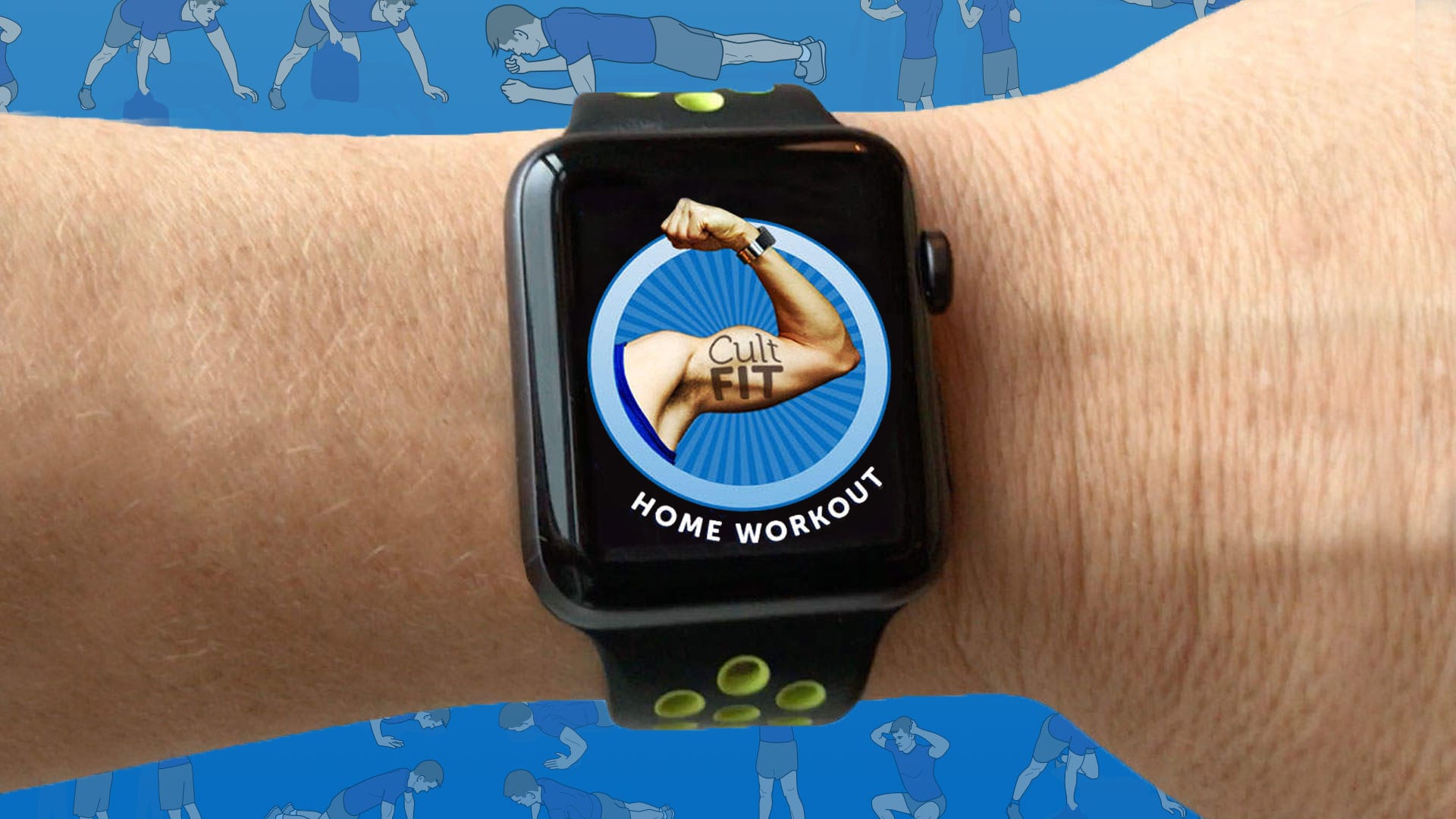
Thanks to the coronavirus pandemic, staying home is a great choice for everyone’s health right now. But it’s not ideal for your fitness. Your Apple Watch will soon start grumbling if you just sit around indoors and don’t close your rings. So what should you do?
You could just disable your Activity notifications until the world gets back to normal. But there’s no need for that. You can log a strength-training workout in your living room right now, without any special equipment. Here’s how.
4 essential tips for an effective home workout
You don’t need special weights like dumbbells and kettlebells to do a strength-training home workout. Exercises like squats and pushups are known as bodyweight exercises because you literally use your body as the weight. Rather than raising and lowering a dumbbell, you move your entire body up and down instead.
The problem with bodyweight exercises is that if you’re already pretty strong, you might find that your body is not heavy enough to give you a challenging workout. In this post, I will focus on four tips you can use to log an effective strength-training workout at home, no matter your current situation. Watch the video above for demos of all four tips detailed below.
Remember: Always check with your doctor before starting any new exercise activity. Don’t exercise if you feel any discomfort, nausea, dizziness or shortness of breath.
Tip No. 1: Use a single limb to double the weight
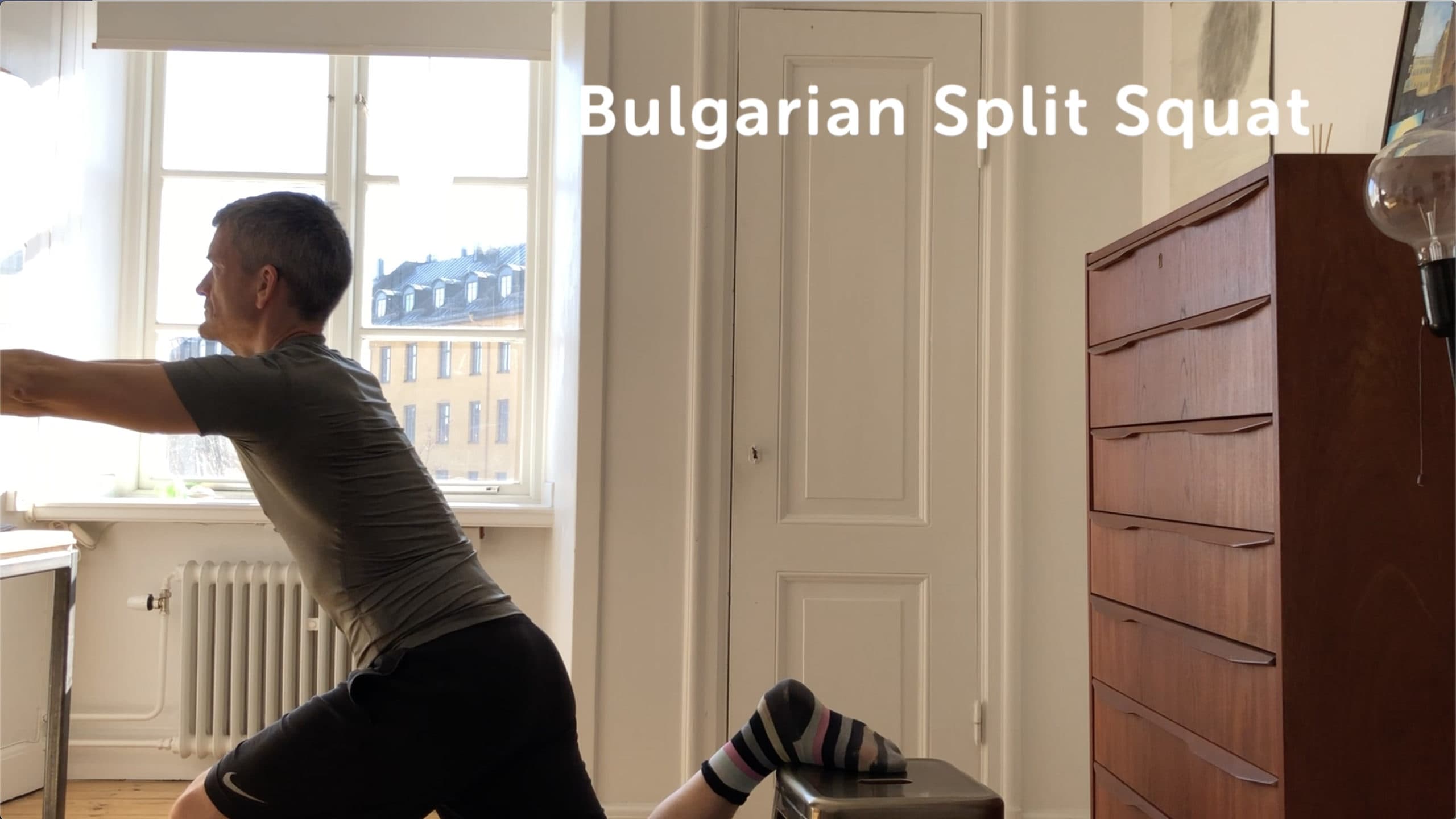
Photo: Graham Bower/Cult of Mac
If you find an exercise like squats is too easy, the simple solution is to do one leg at a time instead of both together. That way, your leg must work twice as hard. The technical term for this is “unilateral exercise” because you just use one limb at a time.
There are a few ways you can do this with squats. One of the easiest is the Bulgarian split squat.
This approach works for things like calf raises, too. Find a staircase and do one leg at a time instead of both together. Even the humble pushup gets twice as hard if you do it one-handed.
Tip No. 2: Use household objects to target smaller muscles
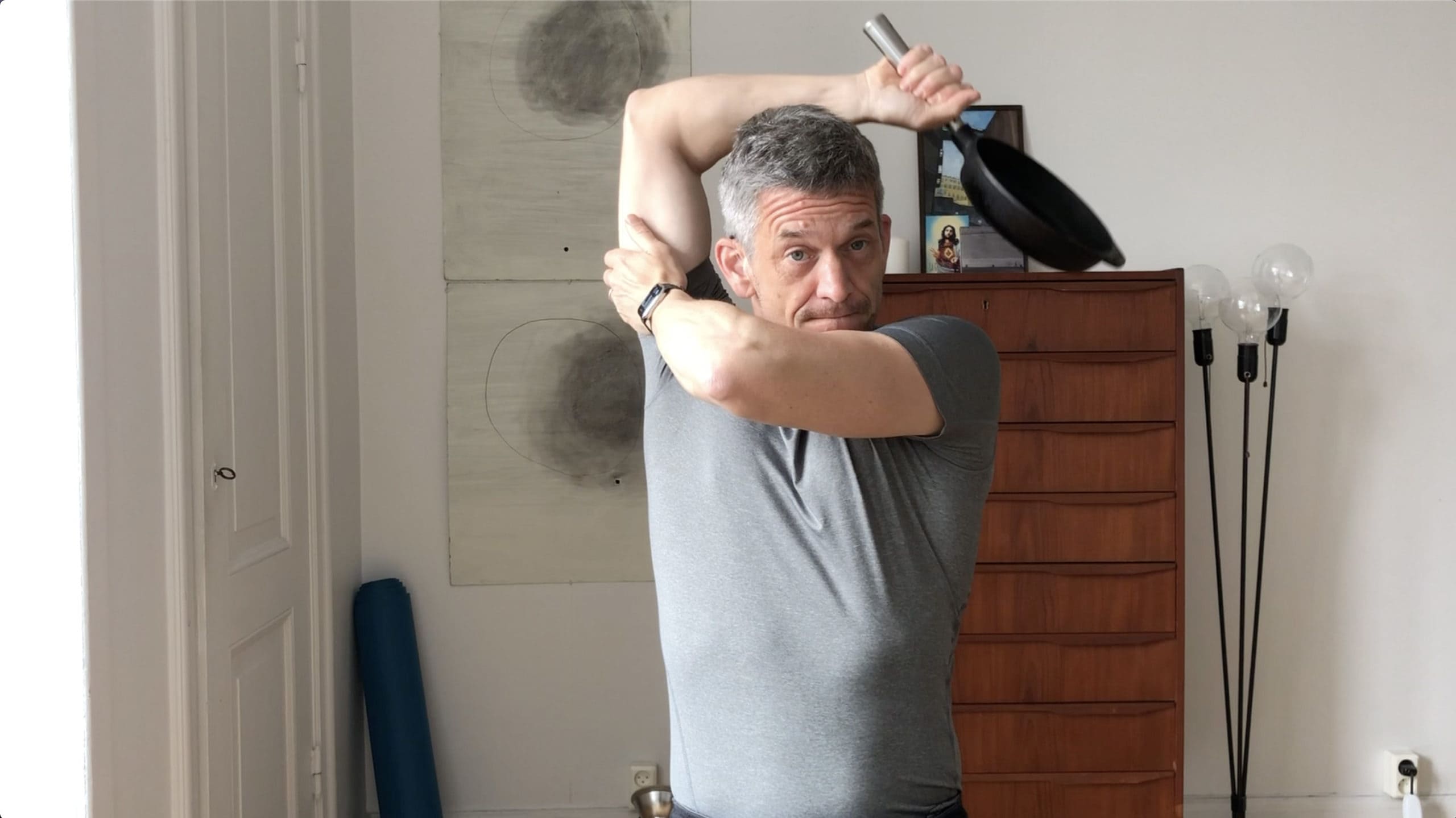
Photo: Graham Bower/Cult of Mac
For big muscles and multijoint exercises, you need something very heavy to work against. But for targeting smaller muscles, you don’t need as much weight. Especially for unilateral exercises using just one limb.
So, for example, when I’m doing a one-arm overhead triceps extension at the gym, I only use a 20-pound dumbbell. And there are plenty of objects you could find around the house that weigh that much. Like a cast-iron frying pan, for example. You’re still pumping iron, after all.
Tip No. 3: Adjust the position of your hands and feet to make exercises harder
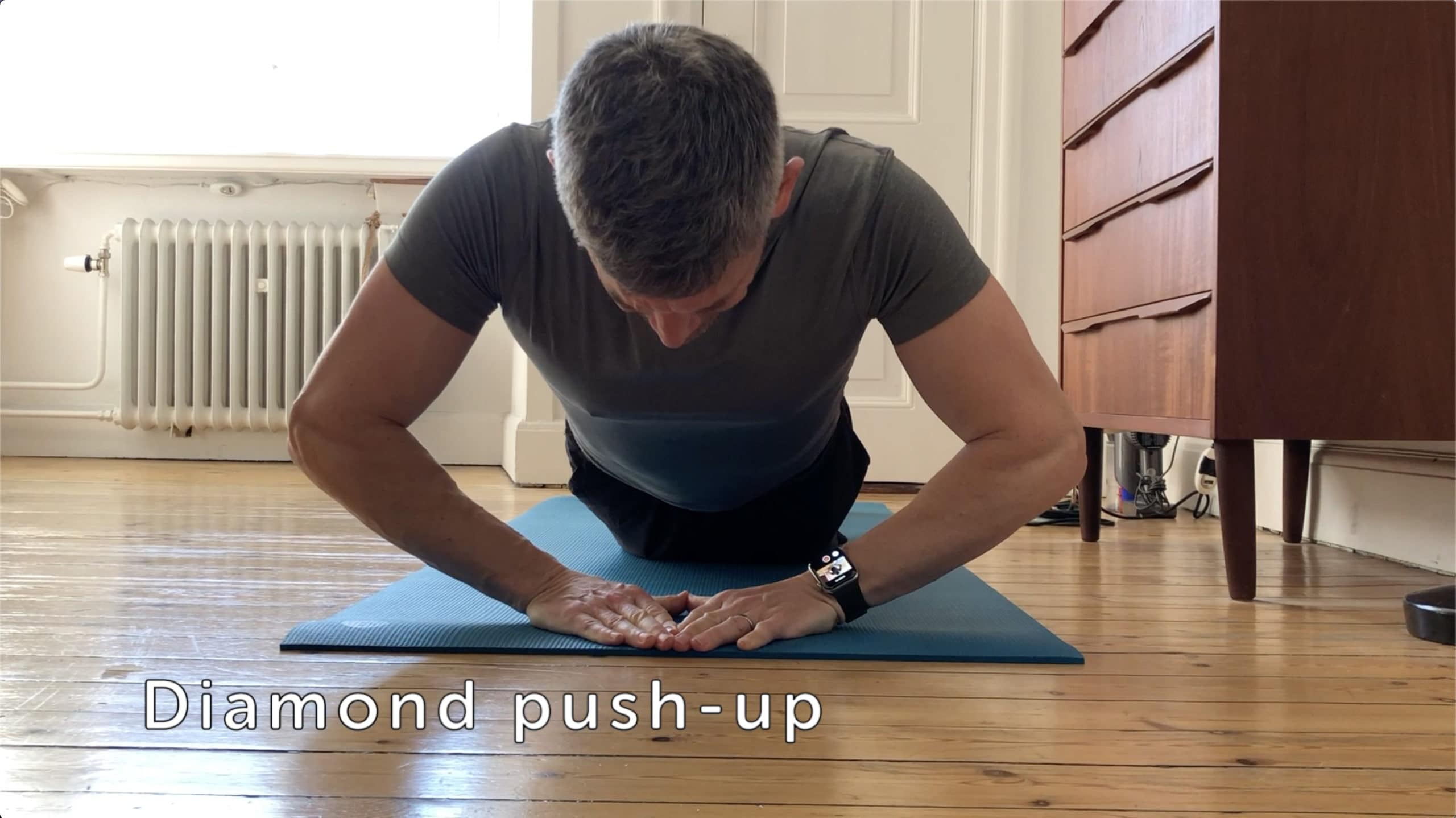
Photo: Graham Bower/Cult of Mac
For some people, pushups already prove hard enough. If that’s you, you can make them easier by doing half pushups, where you keep your knees on the ground. But if you can effortlessly push out tens or even hundred of regular pushups, there are ways to make it more of a challenge.
Try bringing your hands together for a diamond pushup. This destabilizes you, and the angle makes your triceps work harder. Similarly, you could bring your hands wider apart to make your chest take more of the strain. Or you could move your hands down a bit and keep your elbows at your sides for a triceps pushup.
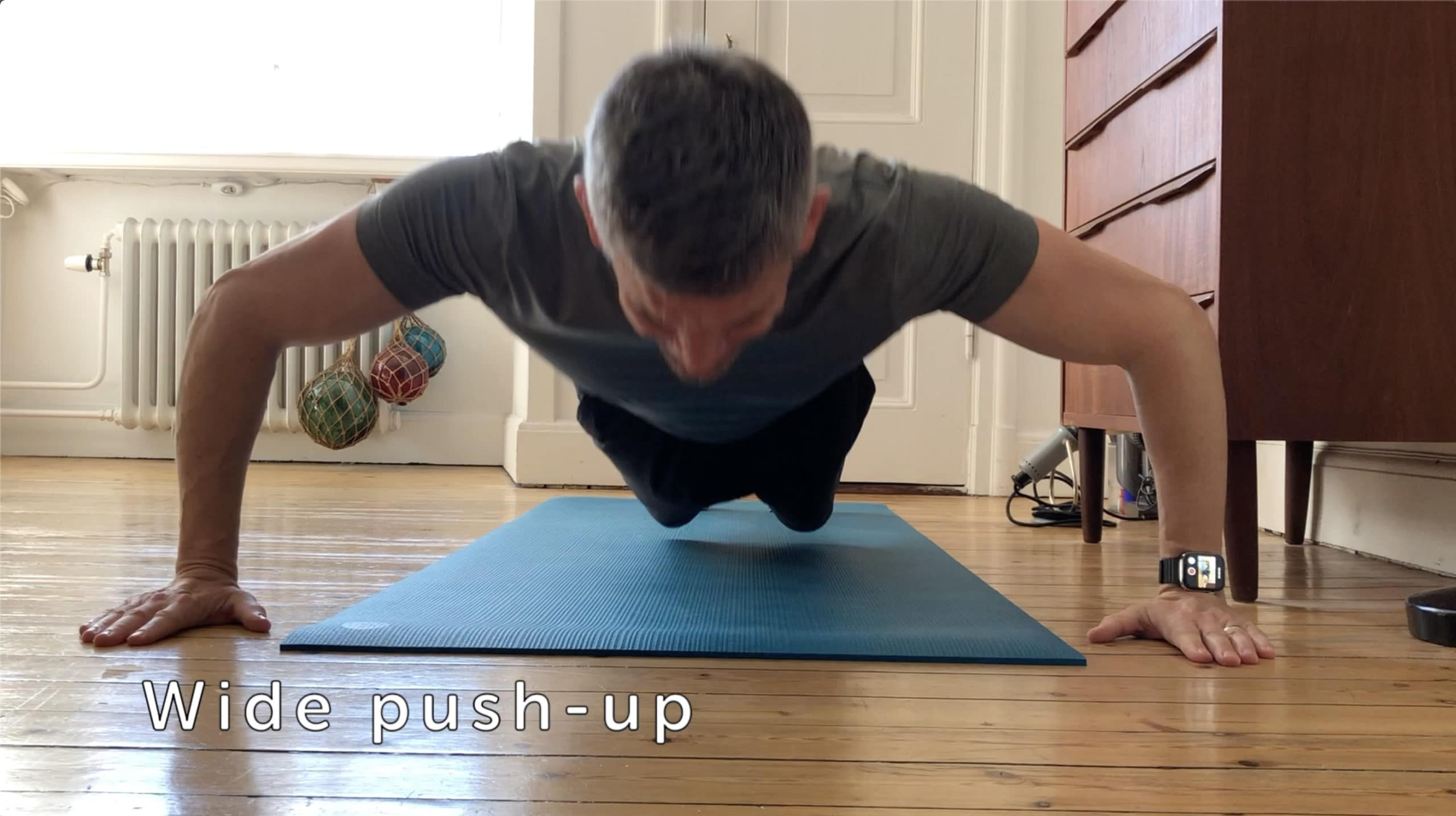
Photo: Graham Bower/Cult of Mac
Tip No. 4: Don’t forget your back — find something to pull on
It’s easy to find exercises you can do at home where you push against your body weight, like pushups. But there’s one important area of your body that this won’t hit: your back. To make your back muscles work, you need to pull instead of push.
The classic bodyweight exercises for pulling — pullups, chin-ups and inverted rows — all involve a bar. But most of us don’t have a bar at home. So we need to find some other way to hit our backs.
If you have a sturdy work surface that can take your weight, you might be able to use it to do inverted rows. Alternatively, you could load up a rucksack with heavy objects like books or bottles full of water, and use it for one-arm rows.
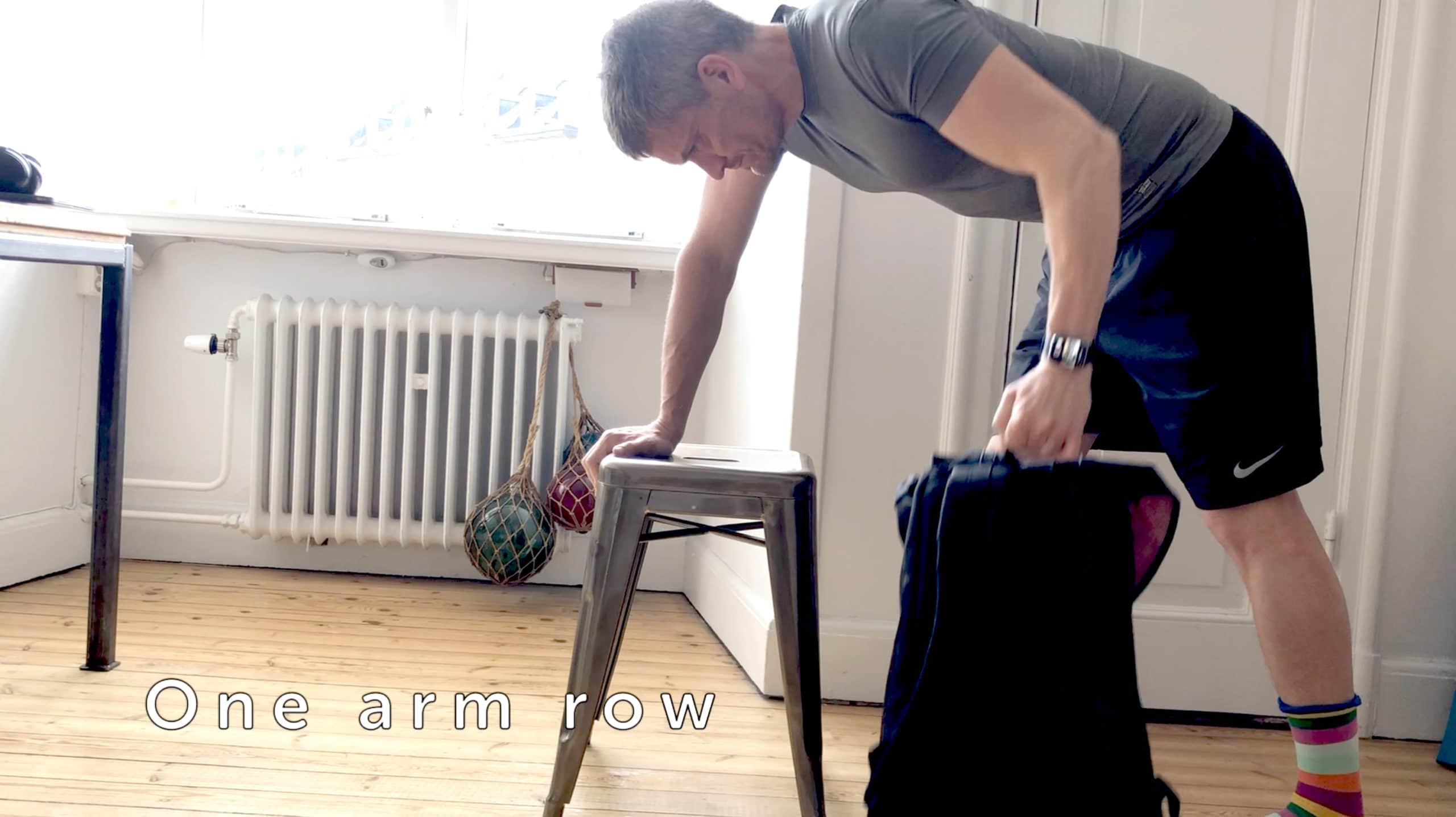
Photo: Graham Bower/Cult of Mac
Bodyweight exercises
With these four tips, you should be able to adapt all kinds of bodyweight exercises to keep your muscles on form until we can all get back to the gym again. They also should keep you closing those all-important Apple Watch Activity rings.
If you’re looking for a structured program to follow using these exercises, check out our free CultFit Home Workout. It’s a four-week program you can do at home without any experience or equipment. And it just takes 10 minutes a day.
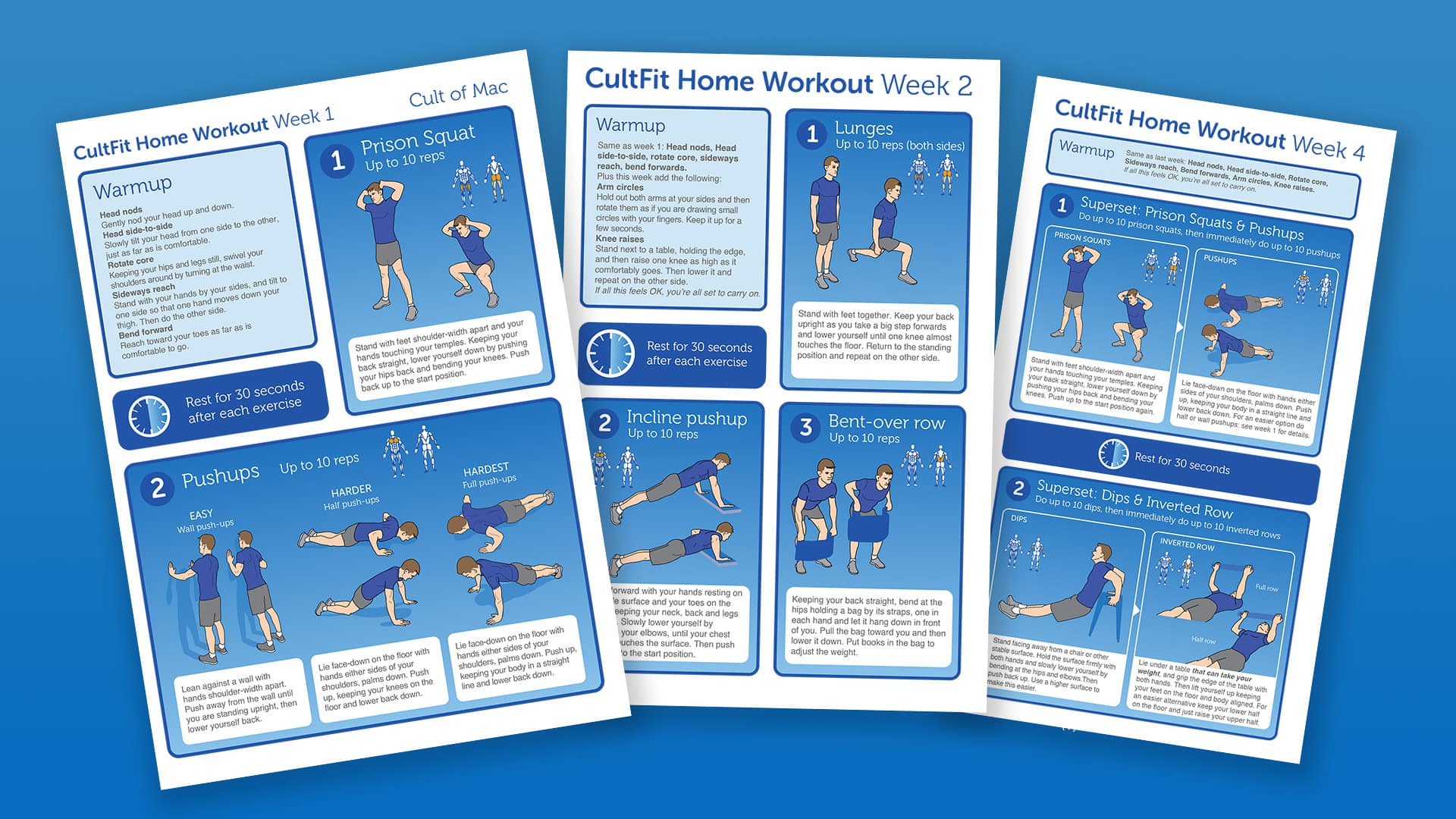
Photo: Graham Bower/Cult of Mac
If you have any questions or comments, I’m on Twitter (@grahambower). I’ll be posting my daily workouts there if you’re looking for some ideas for home workouts during the COVID-19 quarantine.
Music in the video by our very own Charlie Sorrel. Check out his SoundCloud for more.


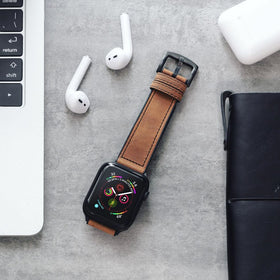
Leave a comment